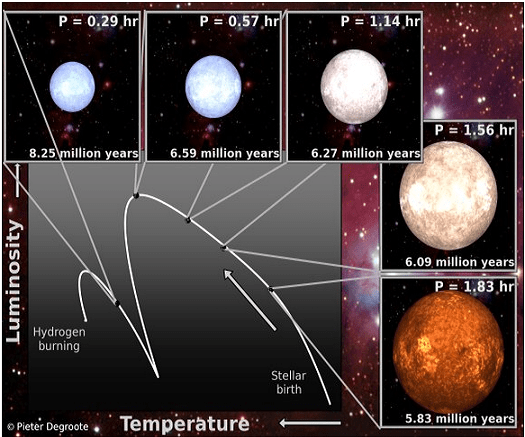New Ultrasound Technique Determines Age Of Fledgling Stars By Measuring Acoustic Vibrations
The researchers at KU Leuven's Institute for Astronomy have developed a new way of determining the age of fledgling stars. This new method not only identifies young stars but also differentiates their evolutionary states. In the study, the researchers have used ultrasound technology similar to that which is used in medicines for seismic analysis of stars. Determining the age of the young stars by measuring acoustic vibrations using ultrasound technology is easy as the knowledge of which molecular cloud a star comes from gives only an imprecise idea regarding the age of stars.

The study was done on the stars in nebula also known as the Christmas Tree Cluster. The team led by Dr. Konstanze Zwintz, a postdoctoral researcher at KU Leuven's Institute for Astronomy studied the vibrations of 34 stars. The stars selected were aged less than 10 million years and had sizes between one to four times the mass of the sun. According to Dr. Zwintz, the data demonstrated that the young stars vibrate at a slower rate as compared to the stars nearer to adulthood. The mass of the stars majorly impacts their development. Heavy stars grow faster and age quickly while the stars with smaller mass evolve slowly. She also said that their model precisely and accurately measures the age of young stars and can also distinguish them according to their life phases.
The study of the KU Leuven's Institute researchers is the first to prove the theories of theoretical physicists that young stars vibrate differently as compared to older stars by providing substantial data from outer space.
The study was published in the Journal Science titled #-Link-Snipped-#.
Source: #-Link-Snipped-#
The study was done on the stars in nebula also known as the Christmas Tree Cluster. The team led by Dr. Konstanze Zwintz, a postdoctoral researcher at KU Leuven's Institute for Astronomy studied the vibrations of 34 stars. The stars selected were aged less than 10 million years and had sizes between one to four times the mass of the sun. According to Dr. Zwintz, the data demonstrated that the young stars vibrate at a slower rate as compared to the stars nearer to adulthood. The mass of the stars majorly impacts their development. Heavy stars grow faster and age quickly while the stars with smaller mass evolve slowly. She also said that their model precisely and accurately measures the age of young stars and can also distinguish them according to their life phases.
The study of the KU Leuven's Institute researchers is the first to prove the theories of theoretical physicists that young stars vibrate differently as compared to older stars by providing substantial data from outer space.
The study was published in the Journal Science titled #-Link-Snipped-#.
0
